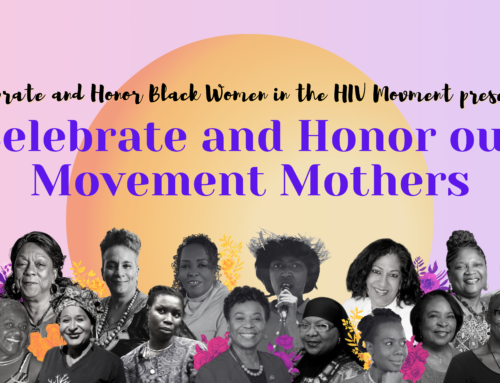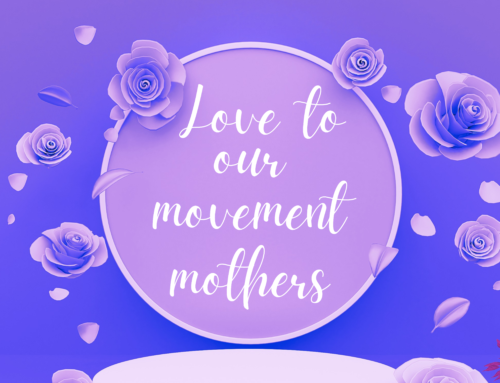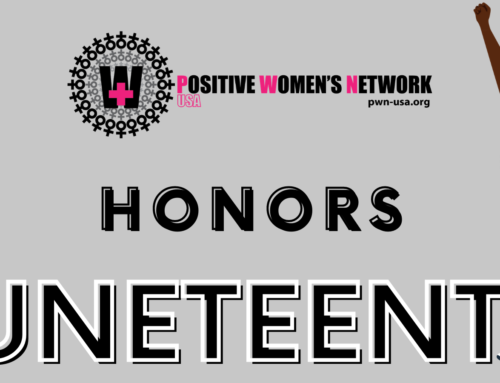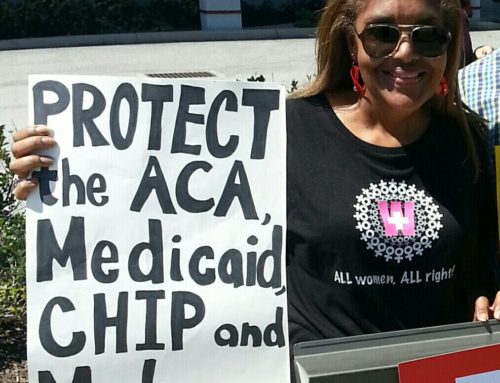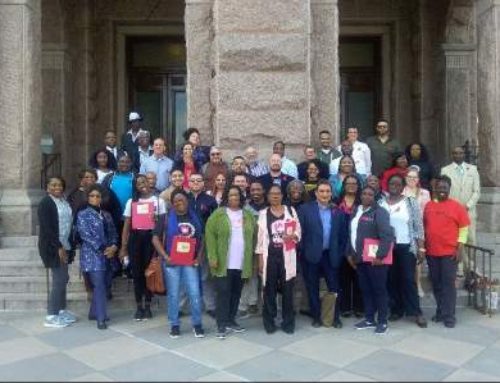February 28, 2020: A year after President Trump gave his State of the Union Address where he announced the initiative Ending the HIV Epidemic: A Plan for America (EtE), Black AIDS Institute (BAI) published its response to the call from the EtE initiative for doing things differently and encouraging innovation in the HIV response. Their groundbreaking report, We the People: A Black Plan to End HIV in America, took up the charge. This report on the state of AIDS in Black America is the first under the visionary leadership of new President and Chief Executive Officer Raniyah Copeland. Positive Women’s Network – USA interviewed BAI’s Communications Coordinator L’lerret Ailith about the vision and purpose of the report.
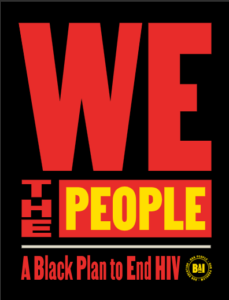 Q. We the People, A Black Plan to End HIV is an extensive, thoroughly researched framework for inclusivity, dismantling anti-black racism in America, and the empowerment of Black people living with or vulnerable to HIV. What made you decide to take on a project of this scale? How did you go about researching it and coming up with its recommendations?
Q. We the People, A Black Plan to End HIV is an extensive, thoroughly researched framework for inclusivity, dismantling anti-black racism in America, and the empowerment of Black people living with or vulnerable to HIV. What made you decide to take on a project of this scale? How did you go about researching it and coming up with its recommendations?A. There have been advocates and organizations that have talked about how to end HIV for Black people, and we’ve been producing annual states of AIDS reports since 1999. Over the past decade, there has been this new conversation about being able to end the HIV epidemic, but there has not been investment in ensuring that it happens in a way that’s more than biomedically focused. And we know that biomedical tools are not the key, and we actually see that it increases disparities due to lack of access, education, etc.
With the administration’s strategies to end HIV in February, it’s clear that the steamrolling of the strategy is going to happen, and we refuse to let it happen without a strategy developed for us and by us. When developing this project, the phrase “We the People” came up, and we thought that it was a great way to frame how we would do all of our work moving forward – we didn’t want recommendations from a few staff at BAI, but from everyone in our community. We engaged in nationwide survey distribution, interviews, focus groups, and advisory committees to ensure this isn’t just about BAI but Black people overall in the United States.
Q. The report reminds the community of names of Black activists and leaders in the HIV movement. How did you decide who to illuminate in the report?
A. We decided to illuminate activists and leaders because we don’t believe that any single entity or individual can end this epidemic – that is what movement work is about. We wanted to uplift leaders and organizations doing this work, and as the only Black national HIV think tank, we felt a responsibility to use our platform to uplift other powerful leaders. We selected people who modeled and mirrored what true community and Black leadership looked like.
We highlighted people who looked like the epidemic. We highlighted people and organizations that have been pivotal in showing that Black people are not left behind. This is not the depth of organizations and leaders doing this work, but a snapshot, and we hope this will continue a culture of lifting up leaders and Black-led organizations in the country.
Q. With persistent new transmissions of HIV in the Black community, how do we circumvent the 50% chance the CDC says Black same gender loving men will acquire HIV in their lifetimes? What do you hope to achieve with the publication?
A. We’ve outlined four major recommendations to address the epidemic that would dissipate health disparities and specifically benefit most marginalized communities. In order to end a disparity, it is important to address the overall health of individuals and develop fully comprehensive, people-centered approaches to care. No longer should we see HIV as an isolated issue indeterminate of other larger socioeconomic conditions of individuals.
How are our elected officials addressing housing? How are they addressing mental health? How are they addressing food deserts? How are they addressing mass incarceration? How are they addressing policing? Are there major investments into community-based resources to ensure universal access to care and tools that would allow people to live within their fullest dignity? These are the first steps.
Q. How do you hope this publication will be used by advocates on the ground?
A. The We the People blueprint is beyond the means of any single organization to deliver. It is our hope that Black leaders, organizations, grassroots activists, and diverse stakeholders use this blueprint to re-prioritize the fight against HIV and to determine how best they can contribute to ending the epidemic. And when it comes to long term implementation, we’re using this platform to monitor and assess jurisdictions and organizations with a report card with how well they are ending the HIV epidemic based on this report.



